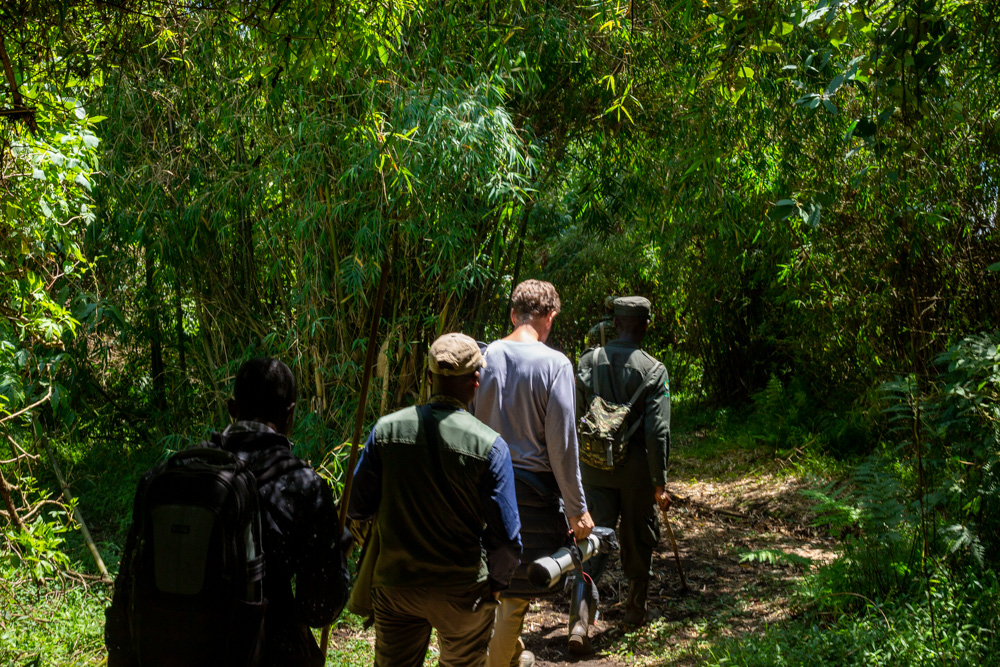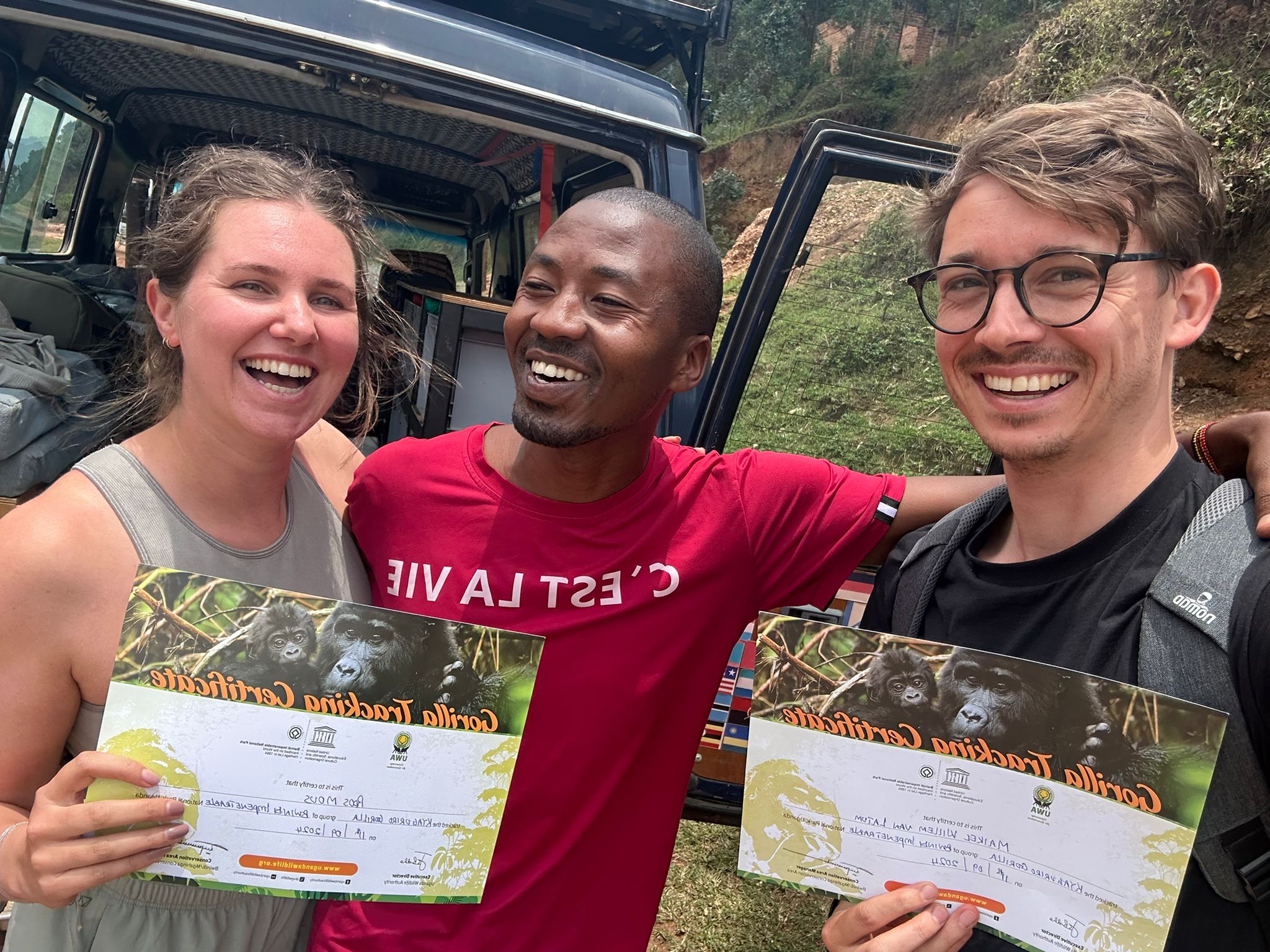Where To See Mountain Gorillas In Africa

Where To See Mountain Gorillas In Africa. There’s something profoundly humbling about looking into the eyes of a mountain gorilla. Their intelligence, curiosity, and social bonds reflect so much of our humanity. Yet, these magnificent primates remain critically endangered, with only about 1,000 left in the wild. Fortunately, conservation efforts have made remarkable strides, and today, seeing mountain gorillas in their natural habitat is not only possible but also a transformative travel experience.
If you’re dreaming of a once-in-a-lifetime wildlife encounter, here’s a guide to where you can see mountain gorillas in Africa, the best times to go, and what to expect.
The Only Places You Can See Mountain Gorillas
Mountain gorillas live exclusively in two regions of central Africa: the Virunga Mountains and the Bwindi Impenetrable Forest. These areas stretch across Uganda, Rwanda, and the Democratic Republic of Congo (DRC). Each destination offers a unique experience, but they all share the same awe-inspiring opportunity to observe mountain gorillas in the wild.
1. Bwindi Impenetrable National Park – Uganda
Bwindi is perhaps the most famous location for gorilla trekking. This UNESCO World Heritage Site is home to nearly half of the world’s remaining mountain gorillas. The dense, misty rainforest offers a dramatic setting for your trek, with ancient trees, ferns, and winding trails that make the journey feel like an adventure into another world.
Highlights:
25 habituated gorilla families
Excellent infrastructure and eco-lodges
Other wildlife including monkeys, forest elephants, and over 350 bird species
Best time to visit: June to August and December to February (dry seasons)
2. Mgahinga Gorilla National Park – Uganda
Less visited than Bwindi, Mgahinga is Uganda’s smallest national park, but it punches well above its weight in beauty and biodiversity. Located in the Virunga Mountains, the park is part of the same volcanic range that spans Rwanda and DRC. Mgahinga is home to the Nyakagezi gorilla family, known for being relatively easy to track.
Highlights:
Fewer tourists, more intimate treks
Stunning volcanic landscapes
Cultural encounters with the Batwa pygmies
Best time to visit: Same as Bwindi – dry seasons for easier trekking conditions
3. Volcanoes National Park – Rwanda
Rwanda is known for its well-organized gorilla tourism industry and breathtaking mountain scenery. Volcanoes National Park, made famous by Dian Fossey’s groundbreaking research, is located just a 2-3 hour drive from Kigali, making it the most accessible gorilla trekking site.
Highlights:
12 habituated gorilla families
High-end lodges and luxury experiences
Opportunity to visit Dian Fossey’s grave and Karisoke Research Center
Best time to visit: June to September and mid-December to February
4. Virunga National Park – Democratic Republic of Congo
For the adventurous traveler, Virunga National Park offers a raw, off-the-beaten-path gorilla trekking experience. It’s the oldest national park in Africa and boasts stunning scenery, including active volcanoes and vast lava plains. Security concerns have limited tourism there, but efforts to stabilize and reopen the park are ongoing.
Highlights:
Adventure and exclusivity
Combination treks with Nyiragongo Volcano hikes
Rich in biodiversity, beyond gorillas
Best time to visit: June to September, but always check current travel advisories
What to Expect During a Gorilla Trek
Gorilla trekking is not a typical wildlife safari. It’s a hike—sometimes a strenuous one—through thick jungle and uneven terrain. Treks can last from 1 to 6 hours depending on where the gorilla families are located. Once found, visitors are allowed to spend one magical hour observing the gorillas.
You’ll need:
A moderate level of fitness
Waterproof hiking boots and gloves
Long sleeves and insect repellent
A camera (no flash!)
Groups are limited to 8 visitors per gorilla family per day, and treks are led by professional guides and armed rangers. You’ll learn about gorilla behavior, ecology, and the immense efforts being made to protect them.
Gorilla Trekking Permits
To ensure sustainable tourism and fund conservation, all gorilla treks require a permit:
Uganda: USD 800 and USD 1500 (Gorilla Habituation Experience)
Rwanda: USD 1,500
DRC: $400–USD 500
While Rwanda is the most expensive, it’s also the most accessible and offers a more luxury-oriented experience. Uganda offers a great balance of cost and quality, while DRC is the budget choice but with more logistical challenges.
Why Your Visit Matters
Every permit sold directly supports conservation. Funds go toward anti-poaching patrols, veterinary care, habitat preservation, and supporting local communities. Gorilla tourism has played a critical role in lifting the species out of the most severe levels of endangerment.
By trekking to see mountain gorillas, you’re not just having an unforgettable adventure—you’re contributing to the survival of one of the planet’s most remarkable creatures.
Seeing mountain gorillas in Africa is more than a bucket-list item—it’s a deeply emotional and impactful experience. Whether you choose the misty forests of Bwindi, the volcanic slopes of Rwanda, or the rugged beauty of the DRC, you’ll walk away changed. This is wildlife tourism at its most powerful: intimate, respectful, and purposeful.
So, lace up your boots, pack your curiosity, and get ready to meet the gentle giants of Africa’s mountains.

Request for a Quote
Start planning your adventure trip today with a professional expert available to help you 24/7. Encounter Africa on your own terms.
Inquire Now
Visa Entry
Uganda offers online visa applications, but many travelers find it easier to pay (US$100) and obtain a visa upon arrival at points like Entebbe International Airport. For travel into Rwanda and Kenya, it's recommended to apply for an East African Visa.
Read More About Visas


